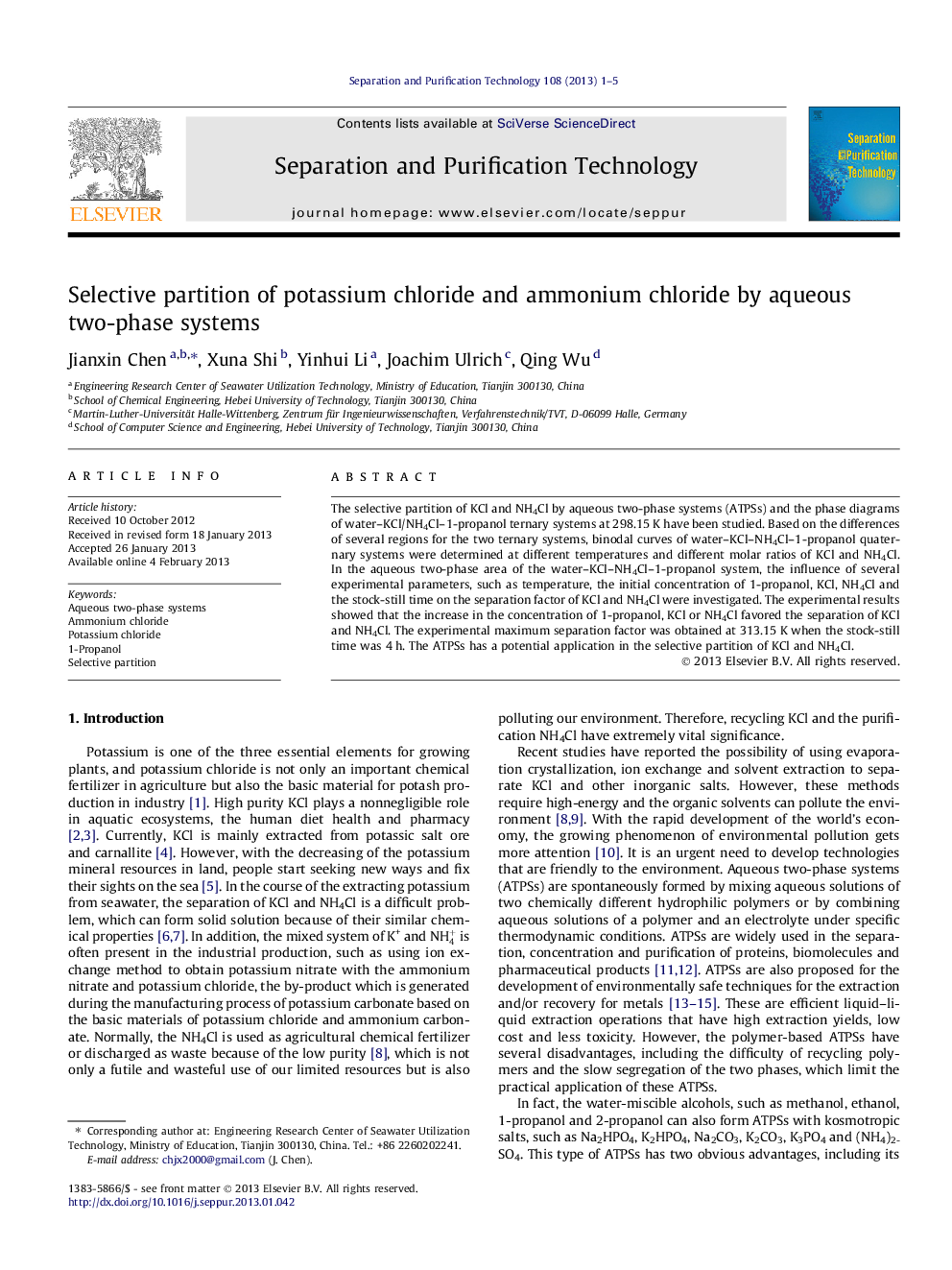| Article ID | Journal | Published Year | Pages | File Type |
|---|---|---|---|---|
| 641854 | Separation and Purification Technology | 2013 | 5 Pages |
The selective partition of KCl and NH4Cl by aqueous two-phase systems (ATPSs) and the phase diagrams of water–KCl/NH4Cl–1-propanol ternary systems at 298.15 K have been studied. Based on the differences of several regions for the two ternary systems, binodal curves of water–KCl–NH4Cl–1-propanol quaternary systems were determined at different temperatures and different molar ratios of KCl and NH4Cl. In the aqueous two-phase area of the water–KCl–NH4Cl–1-propanol system, the influence of several experimental parameters, such as temperature, the initial concentration of 1-propanol, KCl, NH4Cl and the stock-still time on the separation factor of KCl and NH4Cl were investigated. The experimental results showed that the increase in the concentration of 1-propanol, KCl or NH4Cl favored the separation of KCl and NH4Cl. The experimental maximum separation factor was obtained at 313.15 K when the stock-still time was 4 h. The ATPSs has a potential application in the selective partition of KCl and NH4Cl.
Graphical abstractThe ternary phase diagram for water–KCl/NH4Cl–1-proponal at 298.15 K. Separation KCl and NH4Cl in the liquid–liquid area of the aqueous two-phase systems.Figure optionsDownload full-size imageDownload as PowerPoint slideHighlights► The ternary systems H2O–KCl/NH4Cl–1-propanol at 298 K were tested. ► Different binodal curves of H2O–KCl–NH4Cl–1-propanol were first discussed. ► Increasing the concentration of 1-propanol favored the separation of KCl and NH4Cl. ► Increasing the concentration of KCl, NH4Cl favored the separation of KCl and NH4Cl. ► Experimental maximum separation factor was obtained at 313 K when still for 4 h.
